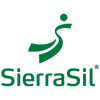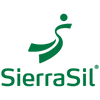Blog
To use a tennis ball for sore muscle relief, to relieve your sore back, calf muscles, feet, hands, shoulders, and thighs takes just a few minutes a day. Thanks to the power of myofascial release, a tennis ball is your...
Continue reading
You know that exercise is key to helping you build a strong, flexible and mobile body. Along with eating a balanced diet, getting adequate sleep, and avoiding smoking – a daily exercise habit is one of the best things you...
Continue reading
It’s the start of another new year. A time to set big goals and to maybe makes some changes in your lifestyle. Many of us set New Year’s resolutions that come with big sacrifices or demand massive changes to our...
Continue reading
The holiday season is here. This means you’re busy. Really busy. Many of us thrive on being busy, but when the busyness takes over, it can be hard to keep balance in your life. For some reason, it happens every...
Continue reading
At SierraSil, our vision is to help one or million or more people live healthier and more active lives. This is our joy, and this is what gets us excited – knowing that we’re helping you live a healthy and...
Continue reading



